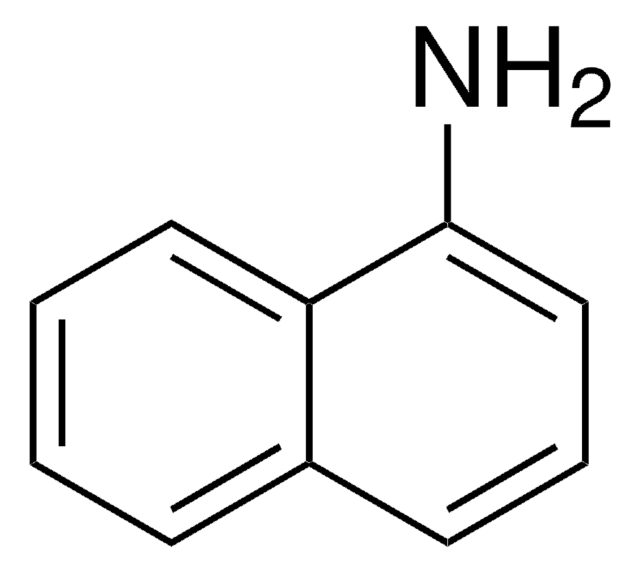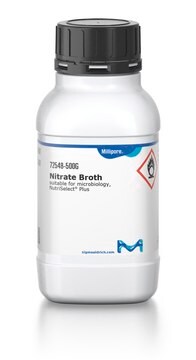39441
Nitrate Reagent B
suitable for microbiology
Sinônimo(s):
Sulfanilic acid solution, 4-Aminobenzenesulfonic acid
About This Item
Produtos recomendados
prazo de validade
limited shelf life, expiry date on the label
Nível de qualidade
composição
acetic acid (30%), 1000 mL
sulfanilic acid, 8.0 g
técnica(s)
microbe id | metabolite detection: suitable
aplicação(ões)
agriculture
clinical testing
environmental
food and beverages
pharmaceutical
microbiology
adequação
Enterobacter spp.
Escherichia coli
Neisseria spp.
anaerobic bacteria
coliforms
cadeia de caracteres SMILES
Nc1ccc(cc1)S(O)(=O)=O
InChI
1S/C6H7NO3S/c7-5-1-3-6(4-2-5)11(8,9)10/h1-4H,7H2,(H,8,9,10)
chave InChI
HVBSAKJJOYLTQU-UHFFFAOYSA-N
Procurando produtos similares? Visita Guia de comparação de produtos
Aplicação
Palavra indicadora
Danger
Frases de perigo
Declarações de precaução
Classificações de perigo
Eye Dam. 1 - Skin Corr. 1B
Código de classe de armazenamento
8A - Combustible corrosive hazardous materials
Classe de risco de água (WGK)
WGK 1
Ponto de fulgor (°F)
Not applicable
Ponto de fulgor (°C)
Not applicable
Equipamento de proteção individual
Faceshields, Gloves, Goggles, type ABEK (EN14387) respirator filter
Choose from one of the most recent versions:
Já possui este produto?
Encontre a documentação dos produtos que você adquiriu recentemente na biblioteca de documentos.
Artigos
Vibrio Detection
On the Trail of Campylobacter
For microbiologists the most fundamental stain was developed in 1884 by the Danish bacteriologist Hans Christian Gram.
Sigma-Aldrich.com presents an article concerning Differentiation of Escherichia coli from coliforms.
Nossa equipe de cientistas tem experiência em todas as áreas de pesquisa, incluindo Life Sciences, ciência de materiais, síntese química, cromatografia, química analítica e muitas outras.
Entre em contato com a assistência técnica





